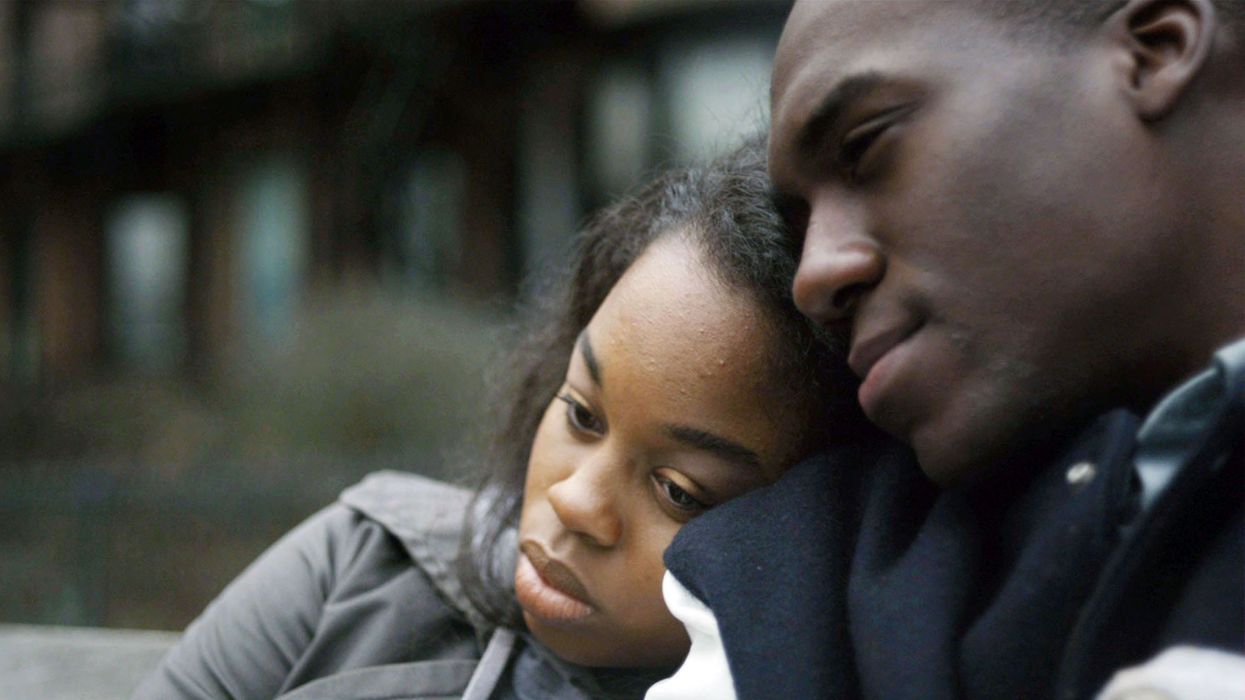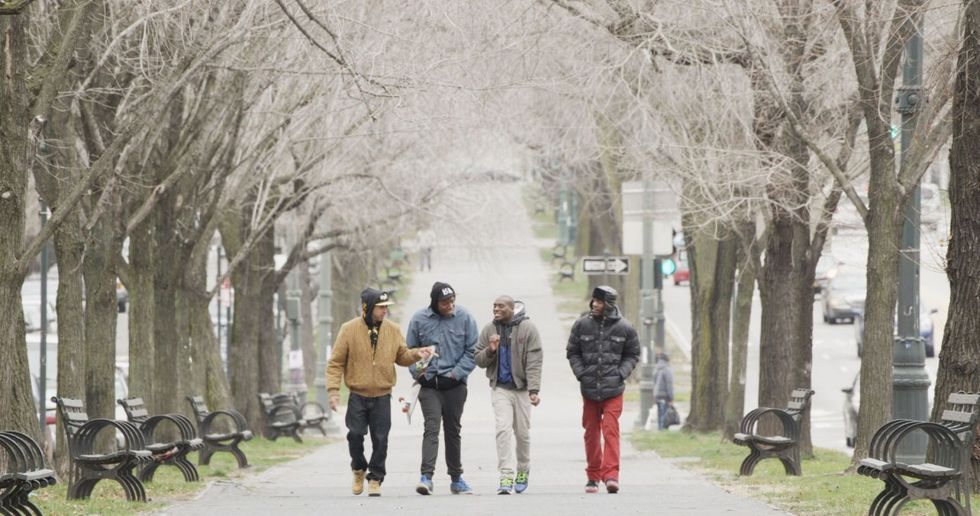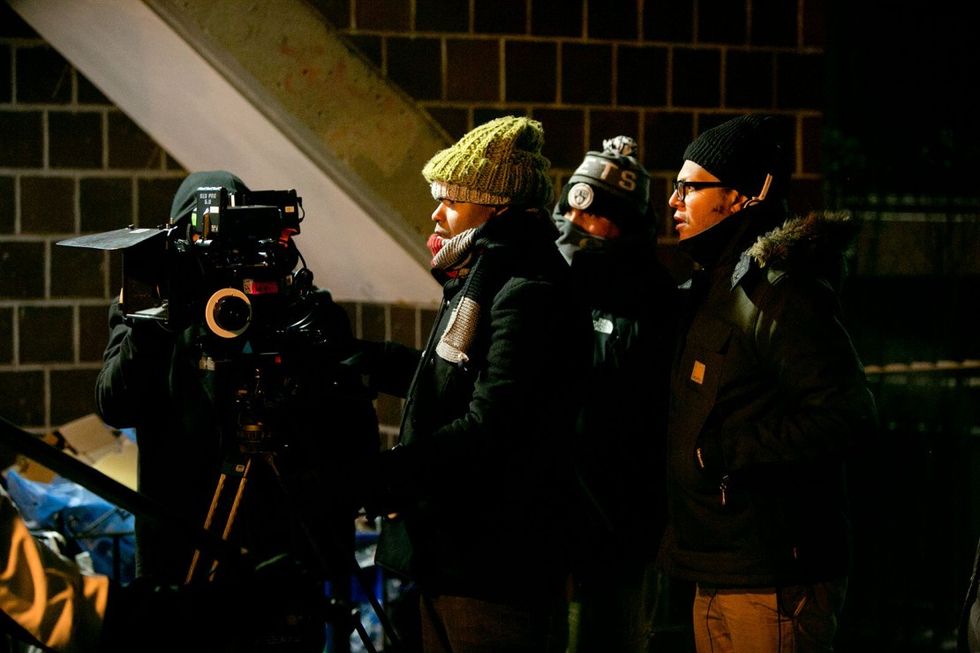'Use the Camera to Dignify Your Characters': Raafi Rivero's '72 Hours'
Rivero’s debut feature brought the BlackStar Film Festival’s most powerful moment.

[Editor's Note: No Film School sent Scout Tafoya to cover the 5th annual BlackStar Film Festival in Philadelphia.]
During the post-screening Q&A of Raafi Rivero's 72 Hours: A Brooklyn Love Story, his film school professor Haile Gerima, director of such titanic artwork as Sankofa and Bush Mama, stood up and took the microphone. "Your texture is…" he started to say. And he couldn't finish his sentence. His emotions got the better of him. He was ready to cry. Raafi walked over and hugged him and the audience burst into applause. I was crying in my seat, or I would have applauded too.
Gerima’s struggles after helping found the L.A. Rebellion movement (a name he still has trouble with), also known as the "Los Angeles School of Black Filmmakers", are documented in the fest's closing night documentary Spirits of Rebellion. He clearly looked at his student’s film and saw hope. Indeed, Rivero may finally have a shot at mainstream acceptance that Gerima and his peers never did.
“Every class was a baptism in the fire of his passion.”
Gerima had more than enough reason to be moved by Rivero's movie. Not only is Rivero an exciting, intelligent new director with plenty to say about art and life, his filmmaking is impossibly beautiful, raw and honest. 72 Hours is tender and loving but never plays down the ugliness of life in impoverished Brooklyn. The way he captures the streets is splendidly empathetic, even as he uncovers the darkest things hiding in the cold night.
Of Gerima, Rivero says, "Haile Gerima is a lion of the cinema. When I arrived to film school at Howard University for the MFA program, I was amazed by his capacity to analyze film and society, then inspire us students to do the same with our work. Every class was a baptism in the fire of his passion.”
No Film School sat down with Rivero after the screening to learn more about his relationship with the trailblazer, adapting the film from a short doc, and how his team created their unique visual style.
NFS: You both wrote and directed the film. Tell us about your screenwriting process.
Rivero: The film is actually an adaptation. A young man named Bilal Ndongo was at an after-school program called ReelWorks that teaches filmmaking to teens in Brooklyn. He made a 7-minute documentary about his friends that a whole bunch of people saw and thought it should be a feature. A friend who’s on the board sent it to me, and I was on board right away. The original short centered on a breakup, as the feature does, and showed parts of Brooklyn “from the inside” in a way that I thought was really compelling.
Once I agreed to do the project, ReelWorks put together a series of improv acting classes with Bilal and other kids, mainly so I could hear and feel what teens are thinking and how they interact. From there, I went into my cave and wrote the first draft of our 90-page shooting script. Several drafts followed until we felt we had something ready to shoot.

NFS: How did the funding come together?
Rivero: The funding came together in several different stages. We did a Kickstarter, another crowdfunding campaign on Seed&Spark, and a few private investors and donors also became a part of the project. We also won Film Independent’s Canon Filmmaker Award through our producer Vincent Harris. That grant gave us access to a full cinema package from Canon, including lenses and the C500 camera.
NFS: How did you go about making this film personal, yours and as visually distinct as it is?
Rivero: My DP Shawn Peters and I scouted a lot of locations by riding our bikes through Brooklyn. We talked mood, tone, and the corresponding camera moves and framings that would be how we told the story. We ended up deciding to shoot our daytime exteriors on a Red camera and the nighttime exteriors on the C500 to take advantage of its low-light capabilities.
“We knew from the beginning that we wanted to allow characters room to move within the frames rather than over-determining everything into a shot-close-reverse language.”
NFS: How did you discover the way you wanted to tell your story with the cameras?
Rivero: One thing that was a guiding light to us shooting-wise was using the camera to dignify our characters. Often, when you see scenes set in public housing there’s a visual style that sensationalizes (or overly-stylizes) everything. We knew from the beginning that we wanted to allow characters room to move within the frames rather than over-determining everything into a shot-close-reverse language.
Of course there’s plenty of traditional coverage, but I think there are a bunch of scenes and frames where the choreography within the shot is just as important. Last, I think there are several visual styles represented throughout–from quick-cutting handheld work, to confidently framed tripod shots – so a lot of it was in trying to arrive at the perfect visual style on a per-scene basis to accentuate the emotion of that particular moment.

NFS: What was it like being taught by such a talent as Haile Gerima?
Rivero: He taught us so much more than directing actors or writing screenplays - he taught us to think in terms of light and darkness, emotion and story. If you went into his class a director, you came out wanting to be a sound person, a DP might want to try editing, a writer wanting to pick up a camera. He made you love all of cinema and want to find your voice within it.
"I do believe that this is an exciting time to be a black filmmaker."
NFS: What do you think about the way we’ve treated luminaries like Gerima, or Charles Burnett, or Julie Dash, who made some of the best American films of all time and then were essentially forgotten?
Rivero: It’s tough to see how any industry treats its trailblazers, and film is no different. That’s why places like BlackStar Film Festival are so important. BlackStar does a great job of centering conversation around film in the context of a larger story of film history and the African diaspora. The collective intelligence of the audience is extremely high and the festival places an emphasis on breaking down the barriers between filmmaker, luminary, panelist, audience member. There are no velvet ropes.
The types of free-flowing conversations and exchanges encouraged by the festival make the newer works by people like Matthew Cherry, Iyabo Kwayana, and Terrence Nance feel like they exist as part of a larger context. More festivals should take on this model.
I do believe that this is an exciting time to be a black filmmaker. More films are being made and distributed than ever, and the internet has allowed for distances to shrink and people in far-off places hearing about the work more quickly.











